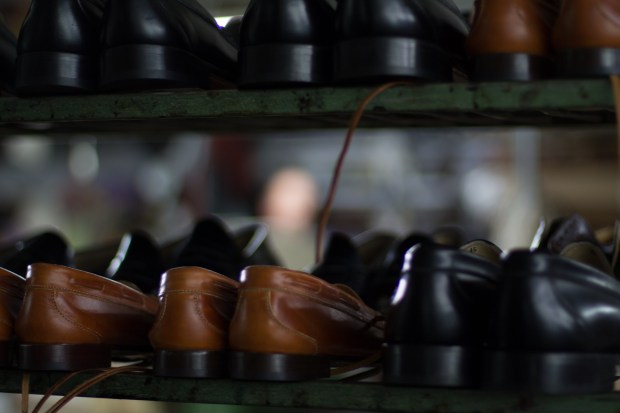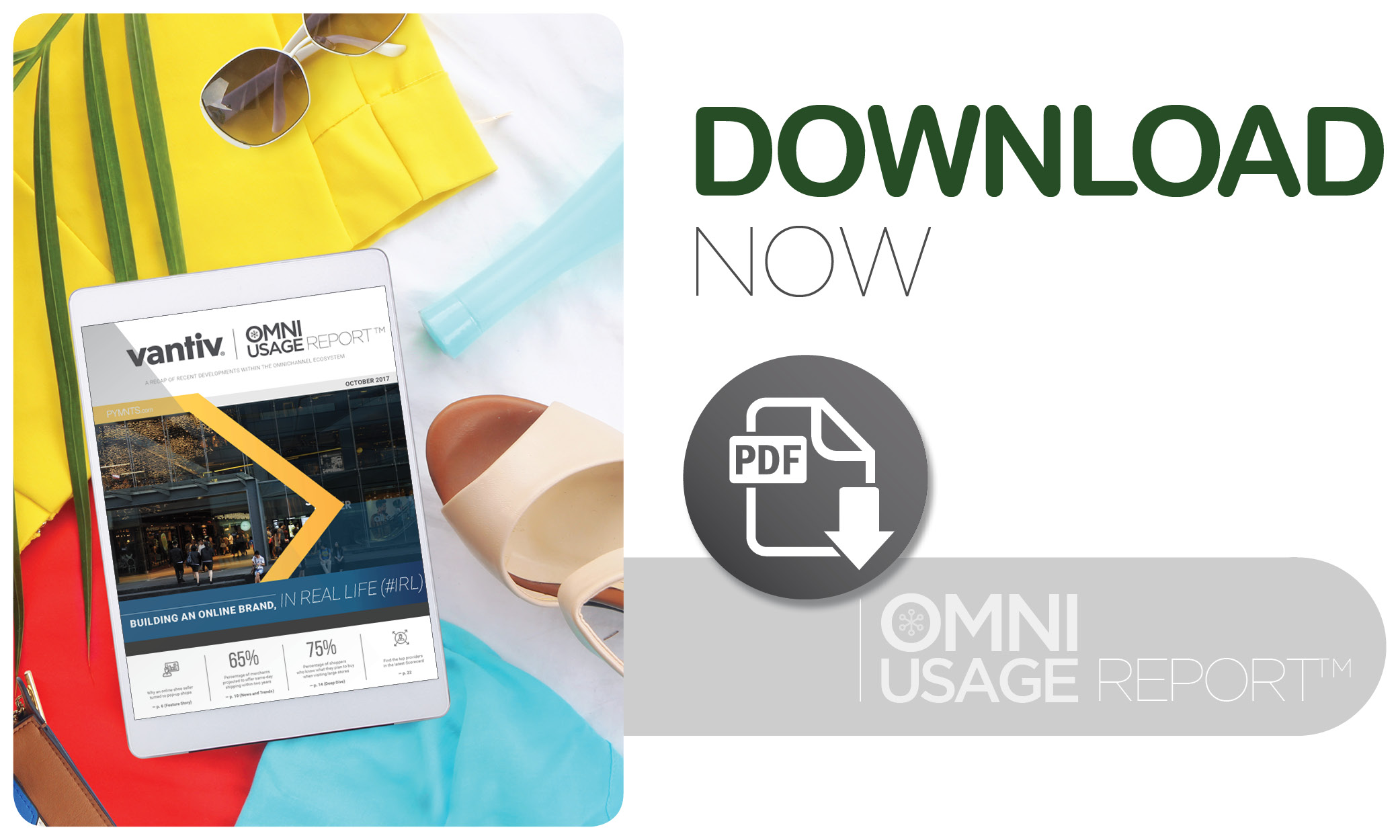Building An Online Brand, In Real Life (#IRL)

How does a handcrafted footwear startup walk the line between building a brand in the real world and selling shoes in the virtual one? In the latest PYMNTS.com Omni Usage Report, a Vantiv collaboration, Randy Shuken, founder of footwear retailer Qüero, explains why he relied on pop-up shops to boost sales online. Find that, a data-rich dive on customer behavior at large vs. small stores and the latest headlines and rankings of top players in the omnichannel space, inside the report.
Whether an international powerhouse with abundant resources or a startup building its business by the bootstraps, merchants largely require the same basic components to take those first steps in the right eCommerce direction. After all, they need an appealing product and the right combination of eCommerce perks and features to catch and hold consumers’ attention.
But, according to Randy Shuken, founder and CEO of Qüero — a high-fashion, handmade footwear and clothing retailer — when it comes to products like clothes and shoes, customers often want to see, feel and try on products. That’s especially true when customers are spending hundreds of dollars on products designed and priced to look and feel top-of-the-line. Such is the case with Qüero.
In a recent interview, Shuken told PYMNTS that building an attractive omnichannel offering that resonates with style aficionados means building credibility. Since its founding in 2015, Qüero has turned to brick-and-mortar pop-up shops to do just that — and now, the company is hoping advanced technology can allow it to reach customers in new ways.
Attracting Customers, #IRL
Qüero’s business plan was built around offering handmade, high-quality leather shoes and other fashion accessories at cheaper prices than competitors.
To make up for the difference in price, the company steered clear of expensive factories, relying instead on a small team of artisans in Spain to make custom shoes by hand. And, rather than spending on overhead costs like stores and inventory, the company launched online, selling directly to consumers.
But consumers want to make sure the pairs they purchase will be worth the price when spending hundreds of dollars on a pair of shoes. They also want to be confident the products are comfortable, sturdy, durable and, perhaps most importantly, that they look good.
While eCommerce technology has made some serious strides in its relatively short life, consumers can’t quite ensure fit, feel and look from even the best eCommerce stores. As a result, Shuken said, they’re hesitant to commit to a major purchase — especially from a company without a physical presence, like Qüero, regardless of whether they identify with the company’s handmade ethos.
To combat this, Shuken decided to open a series of pop-up shops in major cities around the U.S. to give customers an opportunity to get a hands-on (or feet-on, as the case may be) experience with the shoes.
“The pop-up shops give customers a chance to see what looks good on them, what’s comfortable to them and … the kind of product they can expect to get from us,” Shuken said. “There’s nothing more disappointing than ordering something online and it not being up to the quality you expect and that you paid for. These [pop-up shops] give customers a sense of security that they will get what they paid for.”
After opening the first of these brick-and-mortar pop-up shops in New York in 2016 — followed by more in cities including Boston, Los Angeles and Miami — Shuken noted the shops often led to repeat customers. He recalled one customer in particular who he believed Qüero would have lost after just one online purchase, but who instead turned into a repeat customer.
“She was considering ordering a pair of shoes, came to a pop-up shop to try them on and decided she didn’t like something about them,” he said. “But, [she] really liked several of our other products and has now made multiple purchases from us. But, if she ordered that original pair and was disappointed, she probably never would have bought from us again. That’s the value we get from these events.”
The pop-up shops have also been crucial to the company’s financial development. In the company’s first year of business, more than 90 percent of sales came from the physical shops. The eCommerce store has since begun to take on a larger share of the business, however, now accounting for 60 percent of sales.
Finding a Virtual Fit
While Qüero may have built its brand with the help of real-world pop-up shops, its foundation remains decidedly in the virtual world.
Shuken said the company is still focused on selling shoes directly to consumers in more than 40 countries around the world, with its eCommerce store as its primary outlet. The company offers free shipping to the U.S. to entice American consumers, many of whom have become accustomed to free shipping through programs and promotions like Amazon Prime.
But still, the hurdle Qüero faced when it was getting off the ground remains. After all, most consumers want to be sure a new pair of shoes will fit well when it arrives, and, up to this point, that’s been tough to guarantee online — especially for new customers who aren’t accustomed to a company’s particular sizes or tendencies.
Shuken and his team are working to solve roll-the-dice sizing with a modern point-and-shoot method by taking on custom-fitting through the selfie.
The company is currently developing a new mobile app feature designed to help customers receive virtual custom fittings through measurements and sizing, all through photos of their feet taken from three different angles. Shuken estimated the mobile app could bring as much as 95 percent of its business out of the pop-up shop and into the eCommerce store. Qüero hopes to debut the feature before the end of this year.
“That’s going to be a huge step forward for the footwear industry, because I don’t know of anyone who has done that successfully and on a commercial scale yet,” he said. “So, it could be something that takes Qüero to the next level, because we really feel that it can solve some of the biggest problems with selling these kinds of products online successfully.”
The future of footwear may just be digital.
To download the October edition of the PYMNTS.com Omni Usage Report™, a Vantiv collaboration, click the button below:
About the Tracker
The PYMNTS.com Omni Usage Report™, a Vantiv collaboration, features industry-spanning research and insights that arm retailers with data to make smarter decisions for enabling omnichannel commerce.

